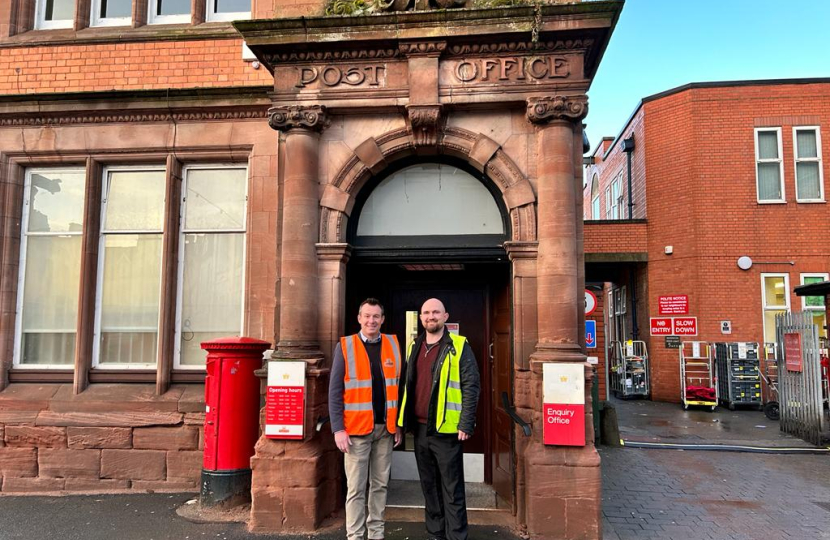
Concerns raised by Stuart Anderson MP, as more post offices services close
Stuart Anderson MP has raised concerns about the closure of more post office services in South Shropshire. He has now written to the Chief Executive of the Post Office Group, seeking assurances that Post Office services will continue to be accessible and available to residents.
Stuart said he received the notification of unplanned service closures on Friday afternoon, informing him that Clunton, Clunbury mobile services, and Aston Muslow home service are all being stepped down. The services being retired as a result of this decision will impact upon many areas in South Shropshire.
Stuart has also asked for details on how the Post Office can better serve residents in rural areas that face extra challenges like sparsity and distance to services.
The previous government provided over £2.5 billion in funding to support the Post Office network over the past decade and signed off on a further £628 million for the Post Office between 2022 and 2025, with government access criteria mandating 99% of the public lives within three miles of a post office and 90% within one mile.
Stuart Anderson MP said:
“South Shropshire is a largely rural constituency, it is the 10th largest in the country with almost a third of the population being 65 years or older. My constituents are particularly reliant on public services such as those offered by the Post Office, and I want to ensure that they remain within the reach for local residents. On Friday afternoon, I received a concerning notification of unplanned service closures informing me that more Post Office services are being stepped down. This will impact many areas in South Shropshire. Given this worrying situation, I have written to the Chief Executive of the Post Office, asking for assurances that Post Office services will remain accessible and available to my constituents. I have also asked for details on how the Post Office can better serve residents in particularly rural areas that face extra challenges like sparsity and distance to services.”





